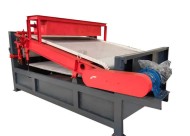Scheelite is an important tungsten ore, mainly composed of sodium tungstate (Na2WO4) and calcium tungstate (CaWO4). It usually appears white, gray, or light yellow and is one of the primary sources of tungsten.
Scheelite Application
Scheelite is the primary raw material for tungsten metal, which is widely used in alloy manufacturing, cutting tools, electrodes, high-temperature materials, and other applications. In addition, tungstate salts in scheelite can also be used in the chemical industry, materials science, and some special applications.
Distribution of scheelite
Scheelite is widely distributed and mainly produced in countries such as China, Russia, Canada, Australia, the United States, Portugal, etc. China is one of the world’s largest scheelite-producing countries, followed by Russia and Canada.
Scheelite Price
Various factors, including the global tungsten market supply and demand situation, economic conditions, policy changes, etc., influence the scheelite price. Generally, with the increase in tungsten market demand and changes in supply, the cost of scheelite may fluctuate.
Scheelite Mining
Scheelite mining usually includes open-pit and underground mining. After mining, the ore undergoes crushing, grinding, ore dressing, and other processing steps to obtain tungsten concentrate. The concentrate is then converted into tungsten metal or other tungsten compounds through chemical reduction, refining, and other processes.
Environment impact of scheelite mining
Scheelite mining may impact the environment, including land degradation, water resource pollution, ecosystem destruction, etc. Therefore, measures need to be taken to protect the environment and minimize the impact on the ecosystem during the mining process.
Scheelite Beneficiation
Scheelite Beneficiation Methods
The main beneficiation methods for scheelite ore include gravity separation, flotation, heavy-medium separation, chemical beneficiation, electrostatic separation, and combined beneficiation methods.
Gravity Separation Method
Gravity separation is a standard ore dressing method that separates minerals based on their differences in density. It typically utilizes centrifuges, dense medium separators, and other equipment to separate the ore into different density fractions, aiming to improve the tungsten grade.
Flotation Method
Flotation is a widely used ore dressing method suitable for cases with significant differences in surface properties between scheelite and associated minerals. By adding chemical reagents to the water, scheelite particles attach to air bubbles and float to the water surface while impurities sink. The floated scheelite concentrate is then collected and processed further.
Heavy-Medium Separation Method
Heavy-medium separation exploits the difference in magnetic properties between scheelite and associated minerals. This method employs magnetic separators to separate the ore into magnetic and non-magnetic fractions, aiming to increase the tungsten grade.
Chemical Beneficiation Method
Chemical beneficiation exploits the different reactivities of scheelite and associated minerals under the action of chemical agents. By adding chemical reagents to the slurry, the surface properties of the minerals are altered, facilitating their separation.
Electrostatic Separation Method
Electrostatic separation utilizes the difference in electrical properties between scheelite and associated minerals. Charged scheelite particles are separated from uncharged associated minerals by subjecting the slurry to an electric field.
Combined Beneficiation Method
Combined beneficiation involves integrating multiple ore dressing methods to improve the effectiveness of mineral processing. For example, combine flotation and gravity separation or apply flotation, gravity separation, and chemical beneficiation methods simultaneously to achieve better separation results.
In practical applications, selecting appropriate beneficiation methods depends on factors such as the characteristics of the raw ore, the beneficiation objectives, equipment facilities, and economic costs. Different beneficiation methods have advantages and disadvantages, and choices and adjustments are made based on specific circumstances.
Scheelite Beneficiation Process
Scheelite beneficiation refers to the process of extracting helpful tungsten minerals from ores. Generally, the scheelite beneficiation process includes crushing, grinding, flotation, and dehydration. The following are the general processes for beneficiation of scheelite:
Crushing and grinding
First, the original scheelite ore is crushed and ground to break it into particles of appropriate size and ensure that the fineness of the particles is moderate. The purpose of crushing and grinding is to break the ore into small enough particles for subsequent flotation treatment.
Flotation
Flotation is one of the most commonly used methods in the scheelite beneficiation process. The ore is first broken into a certain particle size in the flotation process and then put into the flotation tank. By injecting water containing the foaming agent into the flotation tank, the scheelite ore particles are combined with the foaming agent to form floating bubbles so that the scheelite ore floats on the water’s surface while the impurities sink. A scraper then collects the floating foam to obtain a foam flotation concentrate containing scheelite ore.
Dehydration
Dehydrate the scheelite ore concentrate obtained by flotation to reduce the water content and make it reach an appropriate moisture content. Centrifuges, filters, and other equipment are usually used for dehydration.
Drying
Drying the dehydrated scheelite ore further reduces the water content and allows it to reach the required dryness.
Concentrate processing
The dried scheelite ore concentrate is further processed to improve tungsten’s grade and recovery rate. This may include magnetic separation, gravity separation, and other processes.
During the entire mineral processing process, each step’s operating parameters and process flow need to be adjusted according to the characteristics of the original ore and the mineral processing objectives to obtain the best mineral processing effect. At the same time, the effect of each step needs to be closely monitored to ensure that the mineral processing process is stable and efficient. Following is the 1000 TPD scheelite process plant designed by us.
LATEST PRODUCTS
Tubular Screw Conveyor
【Capacity】6-50 m3/h【Procesible Material】 …
Heavy Plate Feeder
Capacity: 100-240 m3/h Power: 15-45 kW Speed: 0…
Plate Magnetic Separator
【Capacity】8-35 t/h 【Power】1.5-3 kW 【Applic…










